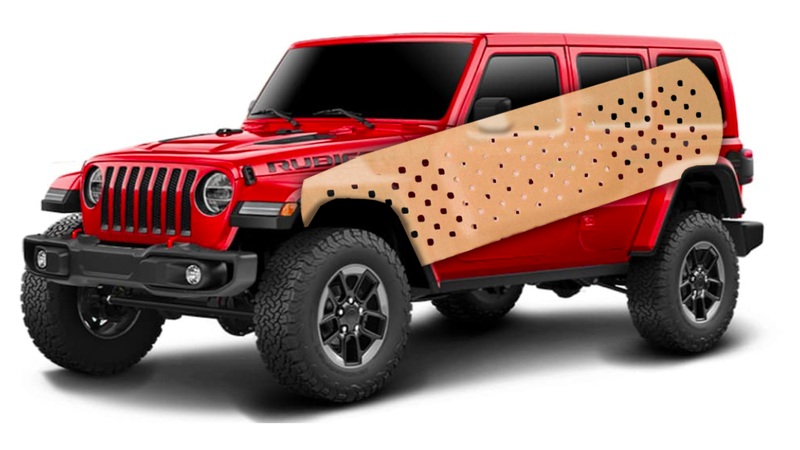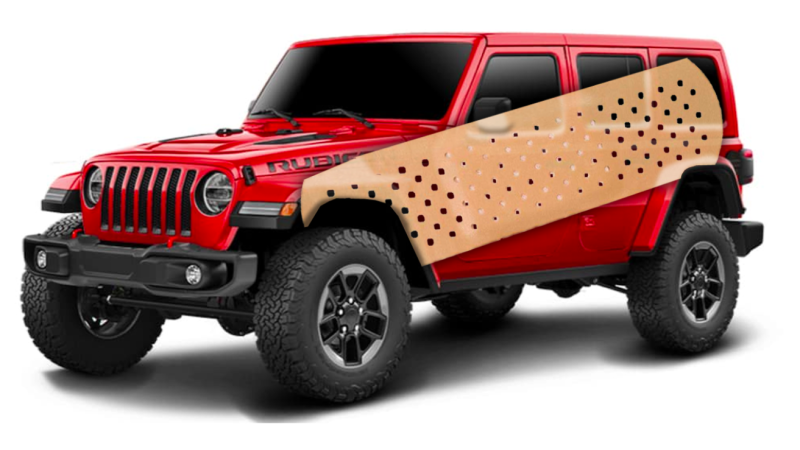
 Truck YeahThe trucks are good!
Truck YeahThe trucks are good!Earlier this month, Fiat Chrysler announced a recall for over 18,000 2018 and 2019 Jeep Wranglers because failing welds were causing a critical suspension mounting bracket to detach from the frame. Now we have the instructions for how Fiat Chrysler plans to fix the bad frames, which the company said could cause some Jeeps to “crash without prior warning.”
Between May 7, 2018 and Aug. 21, 2018, Jeep’s Toledo North Assembly Plant used frames with an “off seam [track bar] weld location” to build up to 18,055 new Jeep Wranglers. The result, Jeep says in its NHTSA Safety Recall Report, is that likely around 720 vehicles (4 percent of the recall population) have track bar brackets that could potentially “[separate] from the frame.” This sounds like something you never really want to happen to your vehicle for any number of reasons, but Jeep identifies that it could possibly lead to reduced steering response and even a crash.
Fiat Chrysler previously told Jalopnik that it planned to inspect all 18,000+ vehicles, but now—thanks to dealer service instructions posted to a Jeep JL owner’s Facebook page—we know how the company will actually fix the roughly 720 cars it expects to find with bad welds.
Advertisement
The first step for dealers is to lift the vehicle and check out the build date code on the frame. If that number is greater than or equal to 126 and less than or equal to 156, then the vehicle was built in the May 7, 2018 it Aug. 21, 2018 window, and its owner should be offered a loaner car as the Jeep gets inspected further.
Vehicles with frame codes in that range will then have their track bar bracket welds—both the inboard and outboard ones—cleaned. From there, with the steering wheel cranked to the left to help give better access, dealers will paint the vehicle’s three-digit VIN to the outboard frame bracket, and take a picture of both welds like so:
Advertisement
Those pictures, along with the frame build date code, the vehicle’s VIN, and the dealership’s information, will be sent to a “Track Bar customer care representative,” who will take a close look at the welds’ positions.
If the representative looks at the photos and determined that the welds are in the right spot, then the Jeep is all set, and no repair will take place. But if he or she finds one or both of the welds to be out of place, dealers will arrange to have a “Technical Weld Specialist” come to make the weld repair. But before that can happen, the dealer has to take some stuff apart.
Advertisement
To prep the outboard weld to be repaired by the weld specialist, dealers are asked to disconnect the battery before lifting the Jeep, remove the left front wheel, undo the track bar nut and bolt shown above, and then take the track bar off of the poorly-welded bracket on the frame.
From there, Fiat Chrysler says its “Technical Weld Specialist will perform the repair on the outboard weld.” There are no further details on how exactly the specialist will conduct the fix, but clearly the job will involve welding that bracket back onto the frame somehow. Fiat Chrysler told me via email simply: “Weld will be made to comply with specs.”
Once the weld specialist’s job is done, dealers will bolt the track bar back onto the frame (with a new nut and bolt), throw the wheel back on, lower the Jeep, torque down the track bar nut to spec, and then give the vehicle back to the customer. That is, unless the inboard weld also needs to be fixed.
Advertisement
Repairing the inboard weld is significantly more involved than fixing the outboard one. In addition to lifting the Jeep and removing the left front wheel, the air dam has to be taken off, and four steering gear mounting bolts have to be removed (to get the steering gear box away from the bracket weld location) after the track bar has been unbolted from the frame bracket:
Advertisement
Each sway bar link’s lower nut and bolt also have to be taken out, likely to get the sway bar out of the way. Then, by grabbing the right front wheel and turning it, the vehicle’s wheels need to be pointed to the rightmost position. This will pull the steering gear away from the frame, and thus away from track bar bracket to give better access to the inboard weld.
That’s when the Technical Weld Specialist will perform the inboard weld repair, or possibly replace the entire bracket.
With that done, dealers will grab the front right tire, and turn the steering linkages to the leftmost position in order to line the steering gear back up with the mounting holes in the frame. New bolts will then be threaded into the steering gear and torqued down.
Advertisement
A new bolt will hold the track bar into the newly-welded (and possibly entirely new) bracket, and new bolts will be used to hook the bottoms of the sway bar links back to the steering knuckles. The wheel will go back on and get torqued to spec, then the vehicle will be lowered, and the sway bar and track bar bolts will be tightened.
Once dealers install the air dam, do an alignment, and check the work via a test drive, the Jeep will be all fixed and ready to go back to the customer.
Jeep lists how much time dealerships can bill to each procedure in the table below:
Advertisement
So if you’ve got a 2018 or 2019 Jeep Wrangler affected by the recall, now you know what type of surgery might be in its future.













